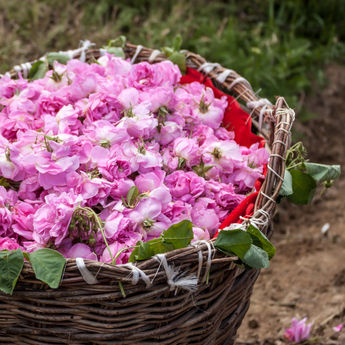
Perfumery
Elements
Many elements come into play when creating a fragrance. Beginning with the basic tools—ingredients, pipets, and a scale—the ASP perfumer creates using their skill set, imagination, and artistry. These creations, comprised of ingredients and accords, ultimately become unique finished fragrances which can then be categorized into fragrance families.
Join us as we explore these elements—unique to our perfumers—beginning with ingredients from their natural origins through the process of acquiring the essences. We’ll also introduce the ASP perfumers who, with their vision and individuality, created masterpieces focused on each element.
Our first element is ASP’s signature rose. Explore our resources page for more general information about fragrance categories, pyramids, notes, etc.























